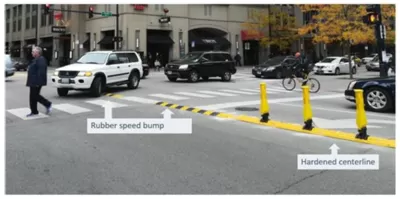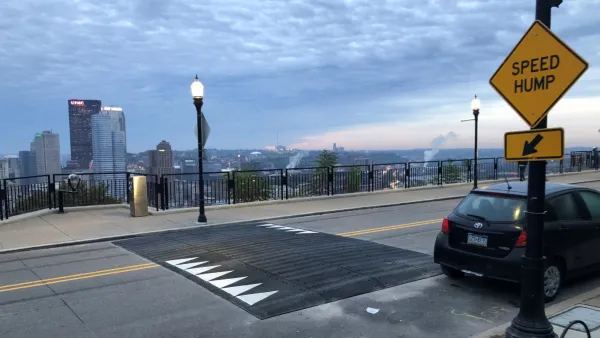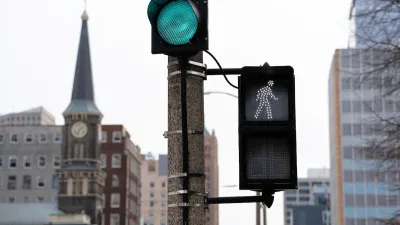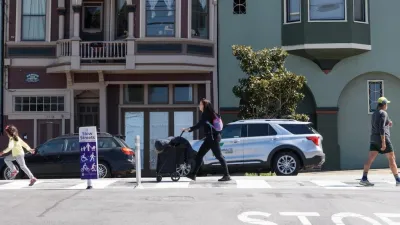The city installed reflective posts and speed bumps at dangerous intersections to induce drivers to take left turns more slowly and carefully.

A traffic calming element installed at 18 Chicago intersections is successfully slowing left turns, reducing the risk of collisions with pedestrians, reports Monica Eng in Axios. The project is part of the city’s efforts to reach its Vision Zero goals and eliminate pedestrian deaths.
According to Eng, “Left turns were involved in 40% of crashes that led to serious injury or death from 2017 to 2021, according to city data.” David Smith, the city’s Complete Streets director, says data from a pilot program shows a 25 percent reduction in crashes at intersections where the change was made.
Some residents expressed frustration with the new infrastructure, inadvertently proving the device’s efficacy: “All they have done is further slow traffic,” one NextDoor commenter complained. Which is, after all, the point. “If you hit a speed bump or the rubber posts, you've driven in the wrong place.”
FULL STORY: Navigating new traffic turns

Planetizen Federal Action Tracker
A weekly monitor of how Trump’s orders and actions are impacting planners and planning in America.

Maui's Vacation Rental Debate Turns Ugly
Verbal attacks, misinformation campaigns and fistfights plague a high-stakes debate to convert thousands of vacation rentals into long-term housing.

Restaurant Patios Were a Pandemic Win — Why Were They so Hard to Keep?
Social distancing requirements and changes in travel patterns prompted cities to pilot new uses for street and sidewalk space. Then it got complicated.

In California Battle of Housing vs. Environment, Housing Just Won
A new state law significantly limits the power of CEQA, an environmental review law that served as a powerful tool for blocking new development.

Boulder Eliminates Parking Minimums Citywide
Officials estimate the cost of building a single underground parking space at up to $100,000.

Orange County, Florida Adopts Largest US “Sprawl Repair” Code
The ‘Orange Code’ seeks to rectify decades of sprawl-inducing, car-oriented development.
Urban Design for Planners 1: Software Tools
This six-course series explores essential urban design concepts using open source software and equips planners with the tools they need to participate fully in the urban design process.
Planning for Universal Design
Learn the tools for implementing Universal Design in planning regulations.
Heyer Gruel & Associates PA
JM Goldson LLC
Custer County Colorado
City of Camden Redevelopment Agency
City of Astoria
Transportation Research & Education Center (TREC) at Portland State University
Jefferson Parish Government
Camden Redevelopment Agency
City of Claremont





























